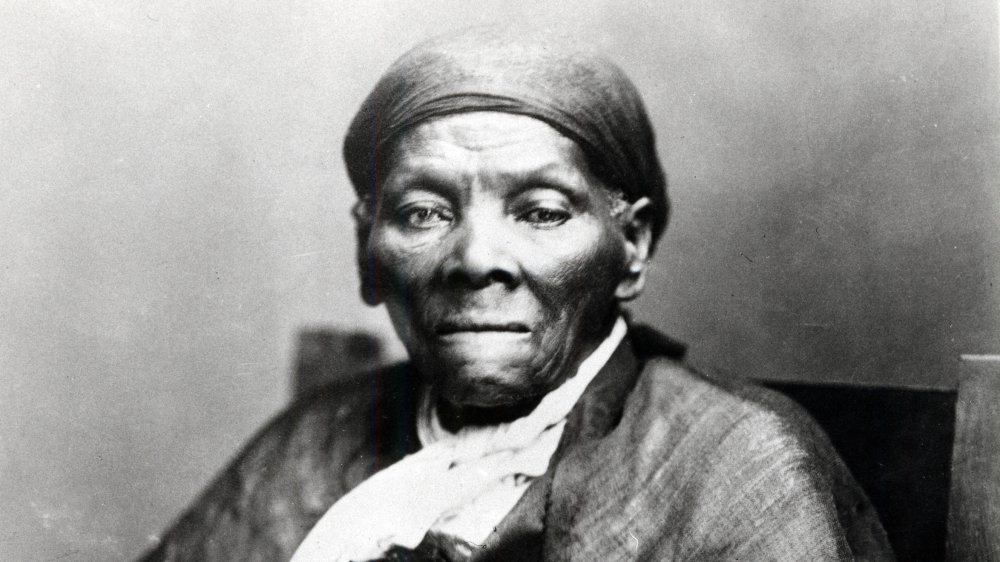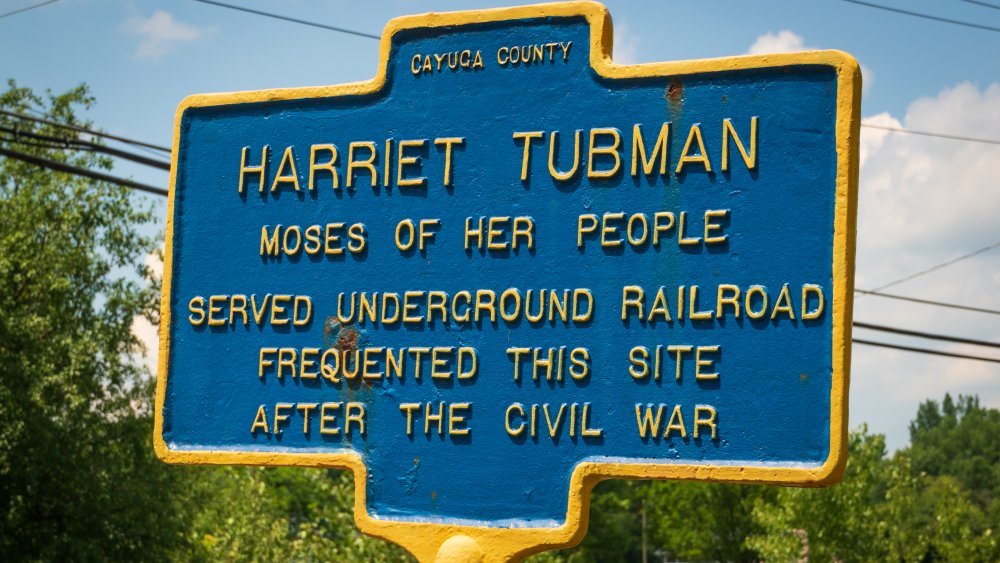The Time Harriet Tubman Fell Victim To A Conman
"I never ran my train off the track and I never lost a passenger."
Such were the words of Harriet Tubman, who over the course of her life, per History, personally "conducted" 70 (and perhaps as many as 300) slaves to freedom via the Underground Railroad. Tubman, born in either 1819 or 1820 as Araminta "Minty" Harriet Ross in Dorchester, Maryland, was one of the Railroad's most important figures. Born a slave, she endured appalling hardships through her life, including being to forced to nurse a child and being whipped if the baby cried, and living with narcolepsy and headaches after suffering an untreated skull fracture at age 12 while defending another slave.
Tubman, who received her last name in 1844 upon marrying a free black man (who later took another wife instead of helping Harriet), didn't gain freedom herself until she fled from her plantation in 1849. Along with other slaves, as PBS describes, she made her escape at night, following the North Star to Pennsylvania. She continued making trips back and froth, and developed an ingenious system that included safe houses, hiding in buggies, dashing when newspapers were being distributed, carrying drugs to quiet babies, and wielding firearms to help convince the fearful that they shouldn't turn back. Referred to as "General" Tubman by abolitionist John Brown, others called her "Moses," for leading so many to freedom. Per Britannica, she eventually became a scout and spy for the Union Army. Slaveholders put a $40,000 bounty on her head.
The Moses of her people, betrayed
One of Tubman's encounters with danger stands out from the rest, but not because of a slave owner or someone on the hunt for her reward money. It came from a hustler who was uncommonly good at his job, who left Tubman beaten and bound in the woods of Auburn, New York, as documented in AuburnPub.
As the story goes, a black man of an unknown identity made his way from Syracuse through Ontario around 1873, duping people along the way. His tale was the same: He knew of a stash of Confederate gold that he needed help procuring. In exchange for some up-front money, kind of like an investment, he would lead the way to the ill-gotten gold. He fooled even Tubman, who took over raising $2,000 for Stevenson (the name the conman chose this time) after Stevenson's previous target couldn't procure a bank loan to pay him. Tubman called on bankers and investors, and even though the local sheriff recommended caution, Tubman eventually got the money from a friend, Anthony Shimer. She then rode out with Stevenson to a remote, forested location where the gold was said to be stashed. There he promptly beat her up and left her bound. When Tubman woke up, she made her way to a friend's house to recover, and Shimer's brother John made restitution for the lost funds.
Tubman died in 1913.

